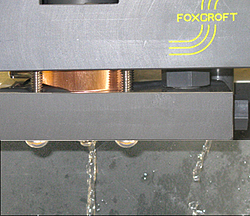 In an effort to conserve water more of our customers are asking about reducing the sample flow rate into their amperometric chlorine residual analyzers.
In an effort to conserve water more of our customers are asking about reducing the sample flow rate into their amperometric chlorine residual analyzers.
Discussions with customers sometimes reveal that the sample flow is turned down so far that the water is draining from the sample cell in drops or a trickle.
There are two major problems this causes:
1. The gold positive electrode can be damaged. Water flowing through the sample cell cools the electrode. Without sufficient flow the electrode overheats, deforms, and stops functioning properly.
2. You will get unreliable readings with any amperometric chlorine residual analyzer if a minimum consistent flow isn't maintained because chlorine is consumed at the electrode and must be replaced.
Also bear in mind that to measure the same residual as your process it's important to send the sample to the analyzer as quickly as possible, especially when using the analyzer to control chlorine feed.
To see how the recommended flow from the (left) measuring cell drain should look please check out the video below. A blue "PA Rural Water" pen is placed next to the drain for size reference.
You may notice the overflow from the drain on the right is less than the drain from the measuring cell on the left. That's OK, maintaining the measuring cell drain flow is more important.
For those who prefer numbers, the recommended sample flow into a standard analyzer is 500 ml/min. The minimum sample flow into a standard analyzer is 250 ml/min. The minimum flow rate from the measuring cell drain is 130ml/min.
If you must minimize water usage we recommend using the FX-1000P-RM flow rotometer. With this unit you bypass the overflow weir and feed the sample into the measuring cell. By using the FX-1000P-RM's pressure and flow control, flow into the analyzer can be reduced to 2-1/2 to 3 GPH (157 to 189 ml/min).
Flow consistency is just as important as flow rate. Amperometric chlorine analyzers are flow sensitive. If you reduce the flow to your analyzer and make no other changes to your system the residual will decrease as well.
So if you decide to reduce the flow to your analyzer, don't set it below the minimum recommended flow rate and don't forget to recalibrate!


